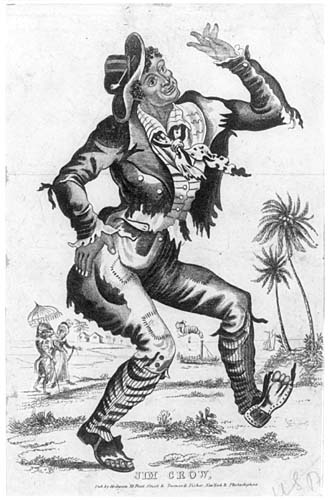Title
Pea Patch Jig
Type
Song
Description
According to Winans, the piece was located amongst Dan Emmett’s (1815-1904) manuscripts (3). In some liner notes of recent recordings of the song, it is listed as “Traditional”. As Winans points out, the piece is significant for its use of syncopation. In this canon of song, “jig” has a unique meaning; unlike its English and Irish cognate, it here refers specifically to minstrel dances and not the music itself (Nathan 455: 1956). According to Nathan, many of these jigs for the banjo appeared in the 1840s and were made available to the public via method books that were published during the 1850s (455: 1956).
As the piece is a jig, and necessarily has no lyrics, it follows that there are no surviving examples of the song transcribed for parlour use. Neither does it appear in any of the extant programs from the United Kingdom during the period. The only confirmed published version of the song is, other than Emmett’s manuscripts, a transcription published by Hans Nathan in Dan Emmett and the Rise of Early Negro Minstrelsy. Judging by the recent recordings of the song, it now seems to have fully passed into the canon of folk music. Given its modest recording history, the song seems to have retained some popularity.
Select Recording History:Twiss, Tim. Early Banjo Volume 1. Self-released, 2007.
Vassar Clements w/ Hartford & Holland. Vassar Clements, John Hartford, Dave Holland. Rounder, 1988.
Winans, Robert, music director and program consultant. The Early Minstrel Show. New World Records, 1998.
Works Cited: Nathan, Hans. Dan Emmett and the Rise of Early Negro Minstrelsy. Norman: Oklahoma UP, 1962.
- - -. “Early Banjo Tunes and American Syncopation.” The Musical Quarterly 42.4 (1956): 455-472.
Winans, Robert B. Liner notes. The Early Minstrel Show. Performed by Matthew Heumann, Percy Denforth, Robert Winans & Vincent Tuffo. New World Records, 1985.
As the piece is a jig, and necessarily has no lyrics, it follows that there are no surviving examples of the song transcribed for parlour use. Neither does it appear in any of the extant programs from the United Kingdom during the period. The only confirmed published version of the song is, other than Emmett’s manuscripts, a transcription published by Hans Nathan in Dan Emmett and the Rise of Early Negro Minstrelsy. Judging by the recent recordings of the song, it now seems to have fully passed into the canon of folk music. Given its modest recording history, the song seems to have retained some popularity.
Select Recording History:
Works Cited:
Mark Turner
Performance(s) listed of this act
| Performer(s) | Troupe | Event and Venue |
|---|---|---|
| , - , |

